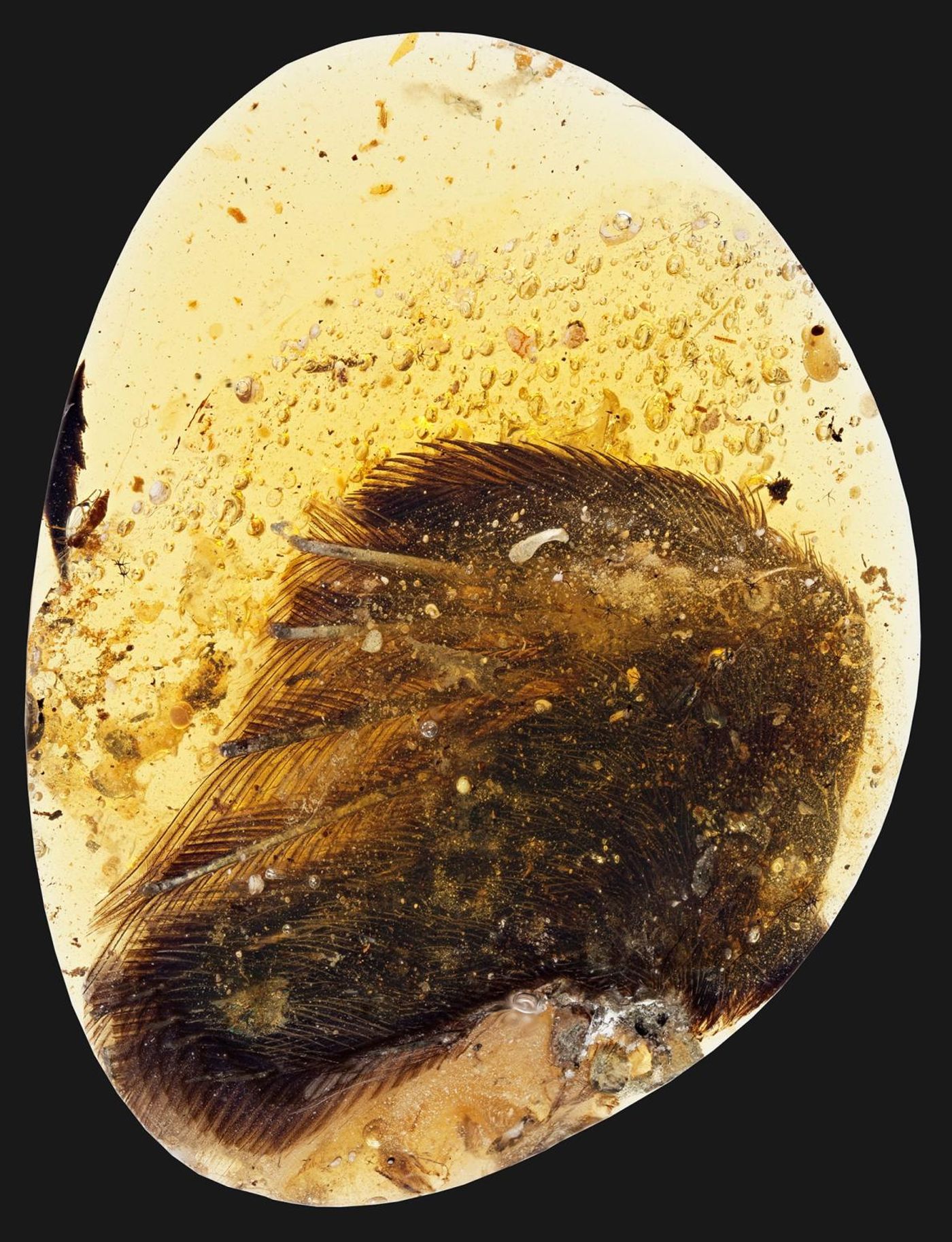99-Million Year-Old Bird Wing Fossils Found in Hunk of Amber
Fossils are interesting artifacts that give us a glimpse of an earlier time on Earth. They show us what life looked like prior to our existence, and modern dating techniques have dated some back millions and even billions of years.
Fossils can exist in a variety of different forms, but one form that has been getting a lot of attention lately are those found in amber crystals in Myanmar. It was only earlier this year that scientists discovered lizards encased in the stuff, and now they’ve found something else fascinating that really puts a dent in our knowledge of fossils.
The latest finding was a set of bird wings that were trapped in similar amber samples and are estimated to be about 99-million years old. The details are published in Nature Communications.

Image Credit: Ryan C. McKellar
The wings, which date back to the cretaceous period and contain samples of soft tissue as well as hard tissue, tell us that birds really haven’t changed all that much from then until now.
The fossils contain partial wings from a set of birds that are believed to be of the same species, but more notably, it’s the first time that feathers have been associated with skeletal structures in a fossil. It’s very much a 3D structure inside of the amber samples, so there’s a lot to take in from studying them.
Although the feathers looked black to the naked eye, a closer look with X-ray micro CT scanning revealed the original tissue colorings are perfectly preserved in the fossil. There are patterns of light and dark colors, including light dots.
It’s also noted that the wing skeletons are smaller than that of a hummingbird’s and that they weren’t yet fully developed, so it’s possible that the fossils are that of younglings and not a fully-grown bird.
"The biggest problem we face with feathers in amber is that we usually get small fragments or isolated feathers, and we’re never quite sure who produced [them]," says co-author Ryan McKellar of Canada's Royal Saskatchewan Museum. "We don’t get something like this. It’s mind-blowingly cool."
This is a big step forward in fossil discoveries because museums often have to do a lot of legwork to guess at the 3D structure that had to exist at some time to create many 2D fossils. Having a 3D fossil eliminates a lot of guesswork and helps give us a clearer view of what existed in the early days of the Earth.
Source: National Geographic








